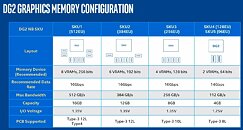Researchers Exploit GPU Fingerprinting to Track Users Online
Online tracking of users happens when 3rd party services collect information about various people and use that to help identify them in the sea of other online persons. This collection of specific information is often called "fingerprinting," and attackers usually exploit it to gain user information. Today, researchers have announced that they managed to use WebGL (Web Graphics Library) to their advantage and create a unique fingerprint for every GPU out there to track users online. This exploit works because every piece of silicon has its own variations and unique characteristics when manufactured, just like each human has a unique fingerprint. Even among the exact processor models, silicon differences make each product distinct. That is the reason why you can not overclock every processor to the same frequency, and binning exists.
What would happen if someone were to precisely explore the differences in GPUs and use those differences to identify online users by those characteristics? This is exactly what researchers that created DrawnApart thought of. Using WebGL, they run a GPU workload that identifies more than 176 measurements across 16 data collection places. This is done using vertex operations in GLSL (OpenGL Shading Language), where workloads are prevented from random distribution on the network of processing units. DrawnApart can measure and record the time to complete vertex renders, record the exact route that the rendering took, handle stall functions, and much more. This enables the framework to give off unique combinations of data turned into fingerprints of GPUs, which can be exploited online. Below you can see the data trace recording of two GPUs (same models) showing variations.
What would happen if someone were to precisely explore the differences in GPUs and use those differences to identify online users by those characteristics? This is exactly what researchers that created DrawnApart thought of. Using WebGL, they run a GPU workload that identifies more than 176 measurements across 16 data collection places. This is done using vertex operations in GLSL (OpenGL Shading Language), where workloads are prevented from random distribution on the network of processing units. DrawnApart can measure and record the time to complete vertex renders, record the exact route that the rendering took, handle stall functions, and much more. This enables the framework to give off unique combinations of data turned into fingerprints of GPUs, which can be exploited online. Below you can see the data trace recording of two GPUs (same models) showing variations.


















































